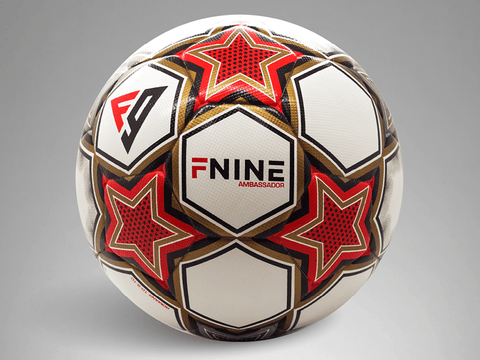Unquestionably, football (or association football) is one of the most celebrated sports worldwide. With people of all ages watching games at home or at the pub, nearly everyone has watched or played football. It’s a beloved sport and that’s why most parents enroll their kids in football camps or training centers.
However, training doesn’t stop there. An aspiring player should train even at home. If you or your kid want to start playing football at home, then you’ll need some equipment. Read below to know some basic information about training equipment for football.
Training Equipment You Need
A football player needs to have rudimentary knowledge about football training equipment. Without it, you’ll be lost in the sea of equipment. Here are some of their basic descriptions and on how to pick out the best football training equipment:
Footballs

One of the most basic and vital pieces of football practice equipment is a football ball. It is the first thing you should have for home practices.
The ball’s standard size is 27 to 28 inches in circumference and weighs about 14 to 16 ounces. This standard size is called ‘Size 5,’ but you can get smaller ones like sizes 1, 3, and 4. These smaller sizes are made for children or as a training tool.
Goal
Another vital piece of football training equipment you need is a goal. A football goal helps trainees with their accuracy. Moreover, this helps aspiring goalies or goalkeepers to practice guarding it.
Like the football ball, you can get goals in different sizes. The smallest is for ages 2 and 3, 3 x 5ft. or 4 x 6 ft in dimension. In contrast, the biggest is 8 x 24 ft. fit for ages 12 and older, which is the standard size. We don’t advise you to get a standard one unless you have a big yard. There are football goals that are smaller and portable.
Rebounder
One of the best football training equipment you’ll need is a rebounder. A football rebounder acts as a safety net and a training partner. As its name suggests, this equipment bounces the ball back to you. It is also a great way to prevent your balls from ending in your neighbor’s yard.
There are different types of rebounders, each with different uses. For example, a striking rebounder is made for those who want to improve their high balls.
Training cones and markers

These pieces of equipment help you to practice ball control and agility. You set them up at a distance and try to move from one after another while dribbling the ball. Moreover, they help to set up the boundaries of your playing field.
Typically, these cones are tall like traffic cones so players can see them. However, shorter cones are primarily used in agility drills. On the other hand, markers are flat mats made from polyvinyl. Both come in sets and are colorful so players can see them.
Mannequins
If you’re practicing alone, you might need something that will block your way to the goal. Mannequins are the answer to that question. And no, we’re not talking about those things at the mall. The ones we’re talking about are pieces of football training equipment that mimic an opposing player. They also vary in size, from four feet up to six feet.
You can use them either acting as a wall when you’re practicing free kicks or practice your ball control. Mannequins are a great addition to your equipment, and it gives you a more realistic feel to your practice sessions.
Agility Ladder and Speed Rings

You can use these pieces of training equipment for football for agility and speed drills. They’re either made from plastic or cloth. They’re easy to store and portable so when you need to do some drills, you just lay them down on the ground anywhere, anytime.
Running through it will improve your footwork, coordination, and balance. It also stimulates the leg muscles and gets those muscles to be familiarized with running and sprinting.
Wearables
After knowing the equipment needed for a mini football training camp at home, you need to know what to wear during practices. The first thing you need is a pair of shoes. It’s recommended to have at least three sets of football cleats, one pair for your actual games and another for training. The last pair is reserved if the other two get badly damaged. You can also get indoor football shoes when playing on hard surfaces like gyms.
Another important thing to wear is a pair of shin guards. They lower the possibility of any shin injuries caused by fast-moving balls. Of course, you also need some socks that can cover those shin guards. These socks will keep your shin guards in place while playing. Finally, of course, your whole ensemble wouldn’t be complete without comfortable practice shorts and a shirt.
Why Do I Need the Best Football Training Equipment?

Investing in training equipment for football elevates your capability to train efficiently and effectively. Training equipment is necessary to build endurance, agility, ball control, muscle memory, and many more skills. The right equipment will also give you a faster reaction time to make better decisions on the field.
How to Maintain Your Football Practice Equipment
Training equipment for football is like any other sports equipment. They need maintenance for them to function properly. However, how do you maintain sports equipment when they experience tremendous wear and tear?
The best thing to do is to clean them after every use. You can also clean your training equipment weekly if you’re not using it that much. Also, store your equipment in a room with a well-regulated temperature. Also, do not simply stack the pieces of equipment on one another. Instead, you can organize your training tools in bins or racks.
